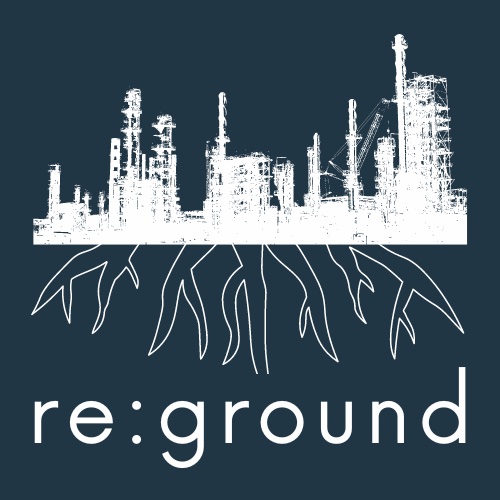
- By Tori Madine
- In Useful Stuff
Social value: Is there a gap between our industry’s good intentions and delivering meaningful social impact to the public?
Content Coms is proud to be part of a network of like-minded organisations and professionals helping to drive real and positive change in placemaking. In this article, our specialist built environment team partners with Nick James, co-founder of sustainable property consultancy Reground, to discuss what it means to deliver social value that genuinely improves lives.
Is there a gap between our industry’s good intentions for social value and the delivery of real social impact benefit?
This question matters because much needed trust between communities and developers will only be built when social value is visible in placemaking rather than just a set of targets on a spreadsheet. If people understand and believe that a scheme will deliver benefits to their community, it stands to reason that they will be more engaged and supportive. Delivering positive outcomes for communities also benefits the developer in terms of reduced planning risk and positive reputation.
For over a decade development in the UK has attempted to take a more systematic approach to the social value dimensions of new schemes. This is a trend being driven by a combination of factors. The Social Value Act of 2012, which mainly applies to public sector procurement and later the UK Government’s Procurement Policy Note in 2020 (PPN06/20). There is also growing pressure from investors interested in more socially and environmentally responsible investment opportunities.
The trouble is social value can be hard to pin down. It means different things to different people. Does positive social impact claimed by a property developer who is simply following a Section 106 or Planning requirement count? Or does this count less than any impact directly arising from exceeding regulatory or client requirements? Are we talking about something measurable, something tangible like jobs? Or something far harder to quantify – like improving people’s lives? Does social value on paper equal social value in practice?
What is ‘social value’?
The UK government defines social value as “the positive social, environmental and economic impact of an activity on stakeholders, over and above what would have happened anyway, taking into account the negative impact of an activity.”
By this definition, social value is a surplus; it reflects how outcomes can be improved above and beyond the average. But who are the stakeholders? And what are we really aiming to achieve through social value? If the aim is to improve people’s overall quality of life, then perhaps the focus should be on social impact.
Social value v social impact
The key difference between social value and social impact is that social value focuses on the short-term benefits that a scheme provides to society, whereas social impact looks at the long-term, sustainable impact that a scheme has on society and the environment.
Social value in the sense covered by the Social Value Act could include creating jobs, supporting local communities (for example through new amenities), and reducing carbon emissions. These benefits can be measured by frameworks such as that offered through the Social Value Portal.
Social impact refers to the long-term, sustainable impact that a scheme has on society and the environment. It considers the positive and negative effects and the impact it has on future generations. Social impact can also be measured in terms of the positive changes that a development scheme brings to society, such as reducing poverty, improving health, and promoting equality.
Social impact can be intangible and stretched out over many years. It is cumulative. It is also, arguably, what we’re really interested in if we’re truly committed to creating sustainable places. When you walk around a place with improved social impact it can be sensed, seen and heard.
Current social value frameworks measure tangible goals, such as jobs, new residential units, less crime. The result is a framework weighted in favour of short-term gains. So, how do we focus more on delivering genuine, transformative social impacts?
Social value with impact
Here are five considerations for delivering projects that offer social value with real impact.
- Long-term thinking
All too often there is currently a lack of endurance to initiatives, leading to tokenism. We won’t have achieved genuine social value by offering a few short-term construction jobs for local people during a scheme’s development. What might your project look like if it adopted the sort of Cathedral Thinking espoused by Roman Krznaric and considered what it could offer over the next 50 or even 100 years?
Post-occupancy evaluation (POE) could form a critical part of informing future briefs and in turn defining and improving social value generation over time. For this to happen, consultation processes and POEs need to be firmly embedded into the project life cycle.
- Co-creation of placemaking and placekeeping
If social value is all about real improvements in real lives, planners and developers must work with communities to understand the relevant quality of life issues impacting people in the area. But community consultation is still too often totemic when it comes to placemaking and placekeeping. Genuine co-creating takes time, a clear intent to listen and learn and cannot be done from behind a desk. It requires a mindset of openness and curiosity that is at odds with the perceived wisdom about ‘what works’ that flows into many projects.
Social value needs to be understood as a way of focusing on the quality-of-life outcomes a project might produce. That includes health and wellbeing, civic engagement, education and employment opportunities, social connections, and access to housing.
- Social value as a project driver
Truth is that social value is still too often a luxury for those projects, particularly those that sit outside public procurement, that can afford to look beyond short-term commercial viability. Most projects play with social value as a fringe concern. Yet surely it is tantamount to a dereliction of duty for professionals involved in making and managing our places to overlook the potential for a project to contribute positive social impact?
Placing the creation of social value or impact at the heart of the project provides an exciting frame of reference for project teams to work within. The approach nurtures more generative cultures and ways of working across multi-disciplinary teams.
- Social value is a two-way process
Social value strategies for places may talk about how the proposed development will impact the existing place and hinterland. But rarely do they talk about the social value that comes from what’s there, and nearby, already. The strategy should be an ask-and-offer exchange. What can a new building, place, or intervention offer its neighbourhood? But also, what does if ask for and receive? The focus on social value must lead to solutions that recognise, and build on from, the existing fabric of the community. How do we ensure these permeate through the sacrosanct ‘red line’ of a scheme?
- A place-based approach
Every place, every project is unique. There can be common principles and frameworks for delivering social value, but methods vary, and solutions must be tailored to the specific time, place and stakeholder needs. In response to this need for a tailored approach, Reground has created a tool to help project teams get under the skin of a place. Called the Place Improvement Framework, it helps developers to understand the unique characteristics of a place and how these can be protected and enhanced to deliver real and positive difference. It offers a solution for those developers who are seeking to put social impact at the heart of their projects, and a framework for how they adapt and align how they work to make it a reality.
These five considerations can all help to shape an approach to placemaking that helps to close the gap between what is promised to the community and what is ultimately delivered. Social value is, at heart, part of the sustainability agenda and the move towards a more resilient, inclusive, equitable and just society. We mustn’t lose sight of these end goals. There is also work to do to communicate these goals to the wider public and build trust with the public that we mean what we say.

Reground is a collaborative community established to catalyse positive change within the built environment. It is a joint initiative of Futureground and Orientate. For more information about Reground or the Place Improvement Framework, please contact Nick James on 0330 1335 395 or at [email protected].
Content Coms’ dedicated built environment team is committed to helping to drive change for better places and better buildings. For an informal chat about how Content Coms could help communicate the social value of your project, please contact Tori Madine on 07990 042796 or at [email protected].

